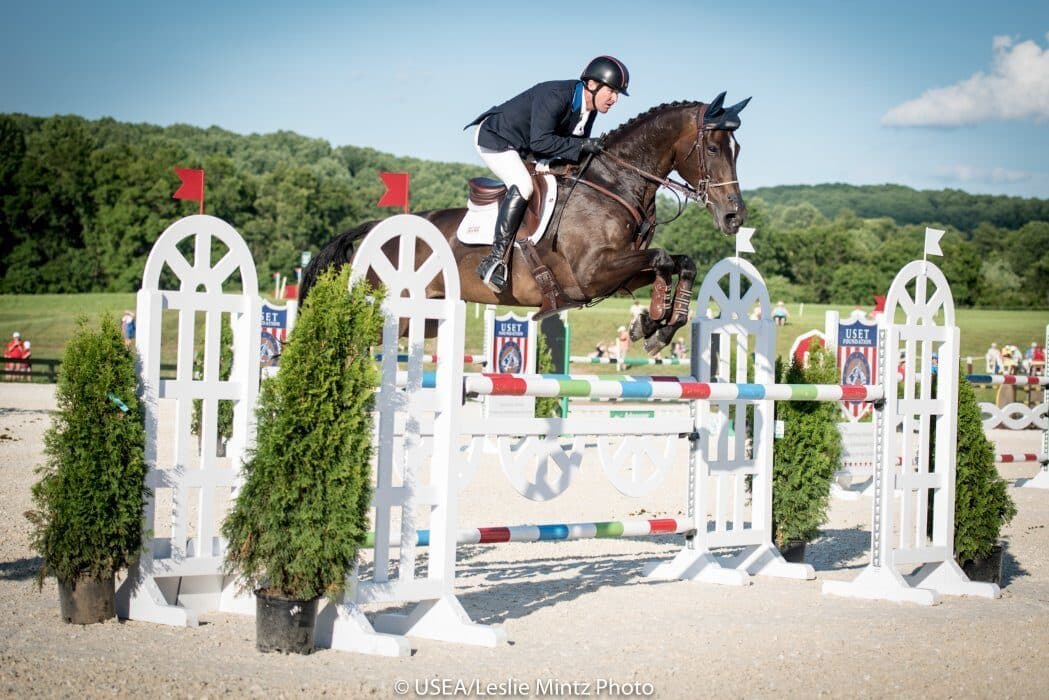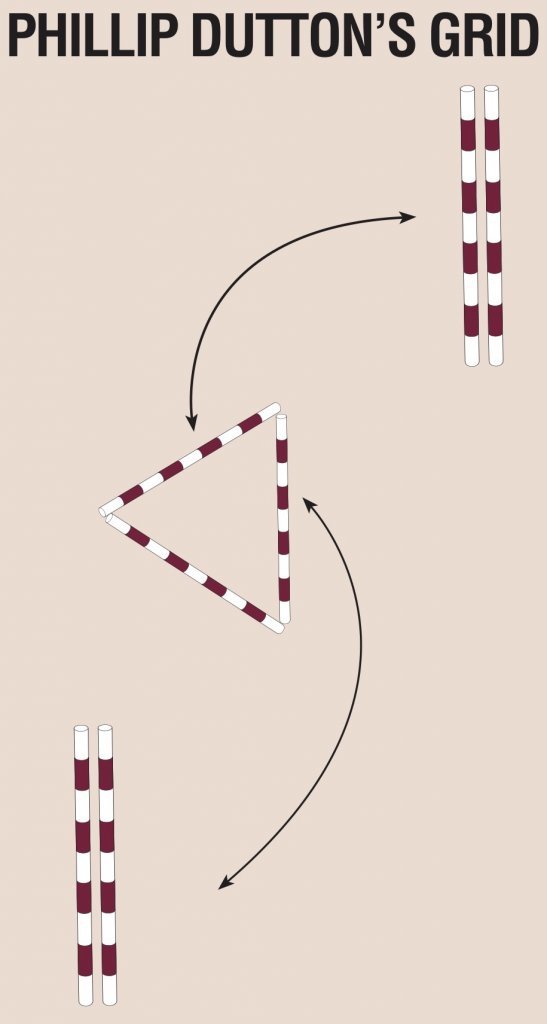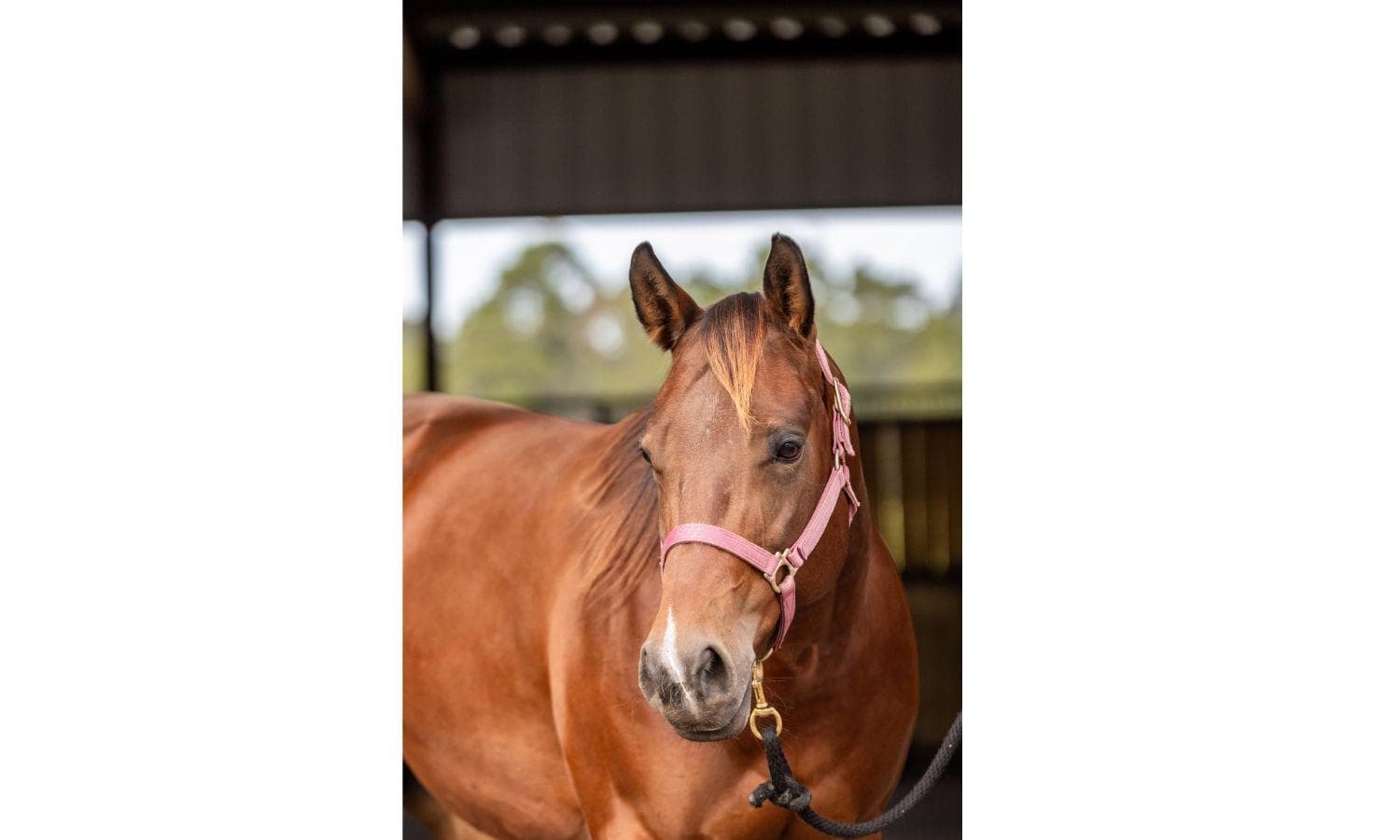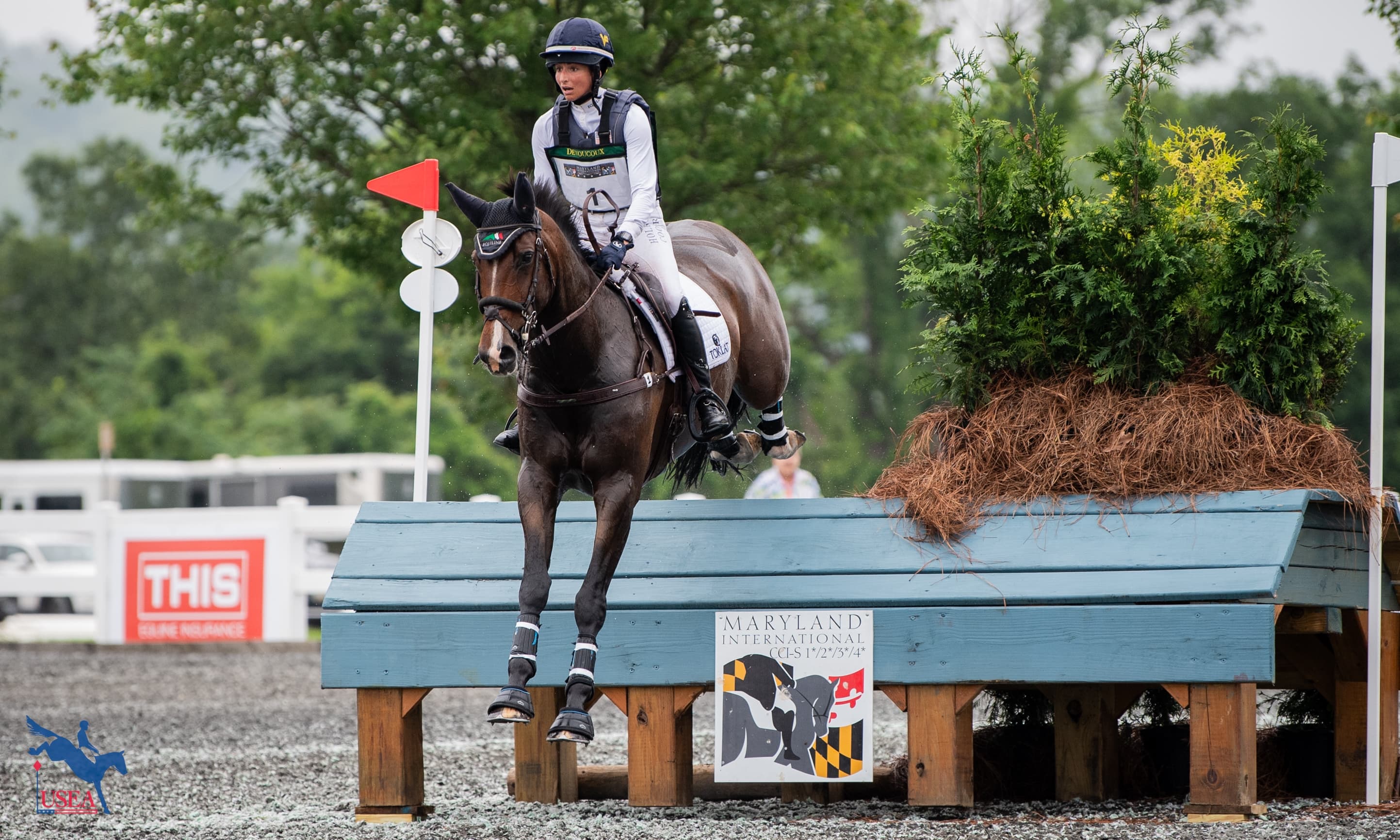Grid Pro Quo with Phillip Dutton

Don't let the winter weather get you down when you can use being stuck in the arena as an opportunity to fine tune your riding! In this series, we are reviving past Grid Pro Quo articles from Eventing USA to help you use the off-season to your advantage and keep you and your horse in tip-top shape for when it's time to get back out there. Click here to check out other past Grid Pro Quo exercises to spice up your arena this winter!
Why:
While I have a variety of exercises that I use to help teach my horses and students how to ride to a jump off of a turn, this is one of my favorite exercises for teaching horses and riders how to ride forward through a turn while also being able to hold the line to the fences. In this day and age, there are so many narrow fences and corners on cross-country courses that you need to be incredibly accurate to make it through a course cleanly. The corner jump in the middle will help you school these accuracy questions, and you can adjust the height and width of the corner depending on your level. Another trend with modern course design is to see big tables off of a turn and the oxers in this exercise are great for learning how to deal with that question out on the cross-country course.
I try to stress to my students the importance of being adjustable on course while still having a plan for each jump. This is a great exercise to practice this concept because there are so many striding options within the three jumps. While schooling at home, I will insist that my students are able to do the three jumps in whatever striding we decide prior to them starting the exercise. Whether we decide that they will stay wide for five strides between each, or stay close for four strides, or have five strides between the first two jumps and four strides between the second two jumps, or vice versa. The point of the exercise is to create the confidence in the rider so that they can go into an exercise with a plan and stick to it while schooling at home.
This then transfers into riding at shows because my riders will now have the skill set to be able to be adjustable on course and create options for themselves at different fences. As we all know, nothing ever goes exactly to plan while out on course, so you need to be adaptable and your horse needs to be adjustable. Since my students have schooled so many variations of this exercise, they then have a variety of tools needed to make a quick adjustment to suit any situation.
How:

Whether I’m teaching a clinic to a big group of people or I’m teaching a private lesson at my farm, I look for
a few simple things in the warm-up that demonstrate that the riders have their horses understanding their aides. First, I want to see that the horse will promptly go forward when the rider puts their leg on. Then, I want to see that the horse will easily collect when the rider simply sits taller and half halts through their core and a light rein aide. Finally, I want to see that the horse will turn in either direction with little resistance, and while staying straight between the aides, meaning
I don’t want to see a horse bowing its shoulder out one way or another. If
the riders are having any trouble with any of these tasks, we will spend some time tuning the horse up on the at before moving on to the jumping. The last thing I want is for a horse to be surprised by a certain request in the middle of a jumping exercise. All of the going, “whoa-ing” and turning aides need to be cemented while in the warm-up.
To get started with the jumping, I will have the riders either trot or canter – depending on the level – one of the oxers on the ends and then do a sweeping roll back turn to the oxer on the other end. Once the horses are doing this smoothly and without changing their rhythm, I will introduce the middle corner jump. The best way to introduce this jump is to approach the corner on a long, straight approach and then turn to one of the oxers, and then repeat in the opposite direction. I will want to see this done a few times before stringing the entire exercise together.
As I mentioned earlier, the beauty of this exercise is that there are so many options with just three jumps. The distances are set so that depending on which line you take, you will have four or five strides between the oxers and the corner in the center. I like to start with the riders getting the same four or five strides – whichever is more appropriate for their horse – consistently a few times before changing things up. Once the riders can reliably get those four or five strides between each set of jumps, I will then tell the riders to get four strides between the first oxer and the corner, and then five strides between the corner and the second oxer. Regardless of the line that you’re riding, it’s important to have a strong canter so that you meet the corner on a bit of a holding stride, with your horse then powering off the ground over it. While on cross-country, you want your horse to be committed to the narrow type of fences, and this is the perfect way to school that feeling.
The most common issue I see with horses while at events is that they are resistant on the landing side of the jump, and when given the chance most horses don’t want to stay out on the turns. So, during this exercise I will work with my students to make sure that their horses are respectful of their inside leg.
While a corner may be intimidating for a lower-level rider, when constructed properly it can be very appropriate for a Beginner Novice level rider on up through the levels. If you’re still too intimidated by the idea of jumping a corner, then start this exercise with a skinny jump in place of the corner and once you’ve mastered that, then try the exercise with a corner in the middle. The same goes for the oxers as well in terms of height.
When starting this exercise, the jumps should be at your comfort level, but as you progress through the exercise, don’t be afraid to raise the height to your competition level at minimum or a little above to challenge yourself.
About Phillip Dutton
Phillip Dutton is an international eventing athlete and six-time Olympian with two team gold medals and one individual bronze medal. He has also twice represented the U.S. at the Pan American Games, winning two team gold medals and one individual silver medal. He has been the leading U.S. rider 13 times and has won the USEF Rolex National CCI4* Championship four times. For more information about Phillip, visit his website.
This Grid Pro Quo first appeared in Volume 46, Issue 6 of Eventing USA.














